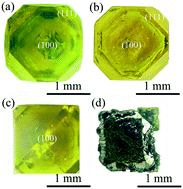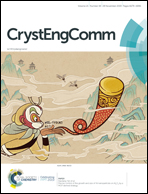Effects of phosphorus doping via Mn3P2 on diamond growth along the (100) surfaces
Abstract
In this study, diamond crystals were synthesized via the temperature gradient method at 5.6 GPa and 1230–1245 °C by adding a Mn3P2 dopant and FeNi catalyst. Experimental results showed that Mn3P2 shifted the V-shaped growth region to the upper right by influencing the catalytic properties. The scanning electron microscopy (SEM) photographs of the diamonds synthesized at 1245 °C revealed that there were many dendritic structures in the (100) surfaces. The diamond crystal quality could be improved when the added Mn3P2 was less than 6 wt% at 1245 °C, but it would be seriously damaged when the diamond was heavily doped with Mn3P2. Pits and uneven layered structures appeared on the diamond surfaces when the additive was included at 12 wt% at 1245 °C. The Fourier transform infrared spectroscopy (FTIR) results revealed that the Mn3P2 additive increases the N content of the crystal and that N is present in the diamond crystal in the form of a “C” center. It is worth noting that phosphorus could be doped into diamond crystals by using the Mn3P2 additive and that the other impurities in diamonds were mostly C–N and C–O forms, as confirmed by X-ray photoelectron spectroscopy (XPS). The phosphorus in the sample crystals mainly formed C–P bonds with carbon, while a smaller amount of phosphorus formed P–O bonds with oxygen. The test results of the electrical properties as assessed by the van der Pauw method for the diamond crystals with Mn3P2 doped at 1245 °C revealed a resistivity of 0.516 × 106–9.729 × 106 Ω cm and a negative Hall coefficient, indicative of an n-type semiconductor.



 Please wait while we load your content...
Please wait while we load your content...